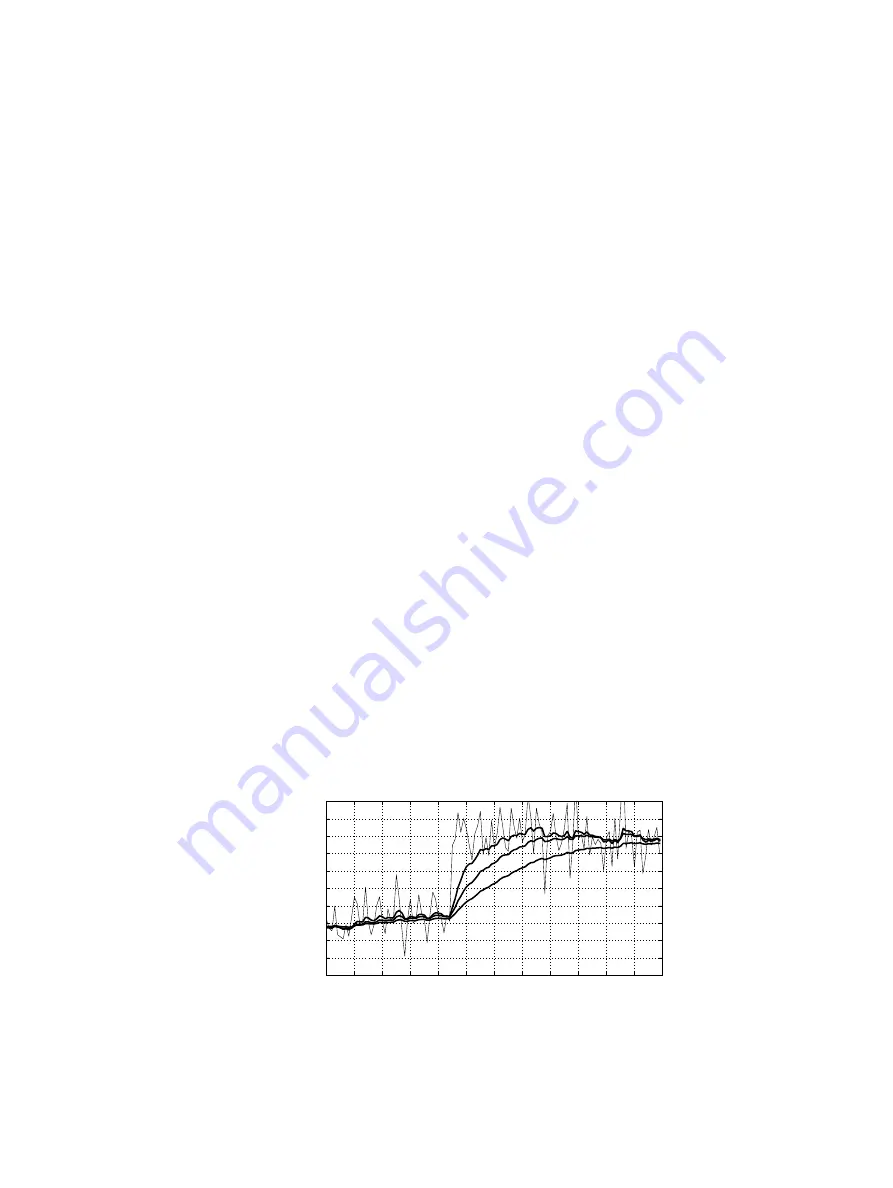
6 Configuration and calibration
41
6 Configuration and calibration
All changes of configuration and calibration are made through the Calibration menu
selected from the Main menu by
5 CALIBRATION
.
Password
: It may be necessary to enter a password before proceeding to the Calibra-
tion menu. The password is printed on the title page of this manual. The password
function is activated and deactivated via the
6 PASSWORD
command in the Calibration
menu.
By default the password is activated.
6.1 Configuring output signal damping
The Outputs display also provides the possibility to enter signal damping to diminish
the influence of process noise. The damping is applied to the CONC value (and thus
the output signal) of the current sensor (see upper edge of the display to check which
sensor is currently chosen and switch in the Outputs display if necessary).
The PR-23 offers three types of signal damping. The damping parameter is set sep-
arately through the Outputs menu selected from the Calibration menu by
2 OUTPUTS
.
What the damping time means in practice depends on the damping type.
6.1.1 Exponential damping
Exponential (standard) damping works for most processes and is the standard choice
for slow and continuous processes. The factory setting is always exponential damping,
access the
3 DAMPING TYPE
command to switch between different damping algorithms.
In the exponential damping (standard damping), the damping time is the time it takes
for the concentration measurement to reach half of its final value at a step change. For
example, if the concentration changes from 50 % to 60 % and damping time is 10 s, it
takes 10 seconds for the DTR to display concentration 55 %. A damping time of 5–15
seconds seems to work best in most cases, the factory setting is 5 seconds. Use the
4
DAMPING TIME
menu item to set the damping time. Figure 6.1 shows how exponential
damping time affects the measurement.
0
10 20 30 40 50 60 70 80 90 100 110 120
Time [s]
12.0
12.1
12.2
12.3
12.4
12.5
12.6
12.7
12.8
12.9
13.0
CONC [%]
5 s
10 s
20 s
Figure 6.1
Exponential damping
Summary of Contents for K-PATENTS PR-23 AX Series
Page 1: ...IM EN PR23 v 2 00 Instruction Manual Vaisala K PATENTS Process Refractometer PR 23...
Page 2: ......
Page 4: ......
Page 17: ...2 Inline refractometer sensor 7 2 2 2 PR 23 mounting guide...
Page 26: ...16 PR 23 instruction manual...
Page 29: ...4 Prism wash systems 19 Figure 4 1 A prism wash system for steam non sanitary...
Page 30: ...20 PR 23 instruction manual Figure 4 2 A sanitary prism wash system for steam...
Page 32: ...22 PR 23 instruction manual Figure 4 5 Wiring for a prism wash system for steam...
Page 33: ...4 Prism wash systems 23 Figure 4 6 A prism wash system for high pressure water non sanitary...
Page 34: ...24 PR 23 instruction manual Figure 4 7 A sanitary prism wash system for high pressure water...
Page 35: ...4 Prism wash systems 25 Figure 4 8 Wiring for a prism wash system for high pressure water...
Page 40: ...30 PR 23 instruction manual...
Page 50: ...40 PR 23 instruction manual...
Page 72: ...62 PR 23 instruction manual...
Page 174: ...164 PR 23 instruction manual...
Page 179: ...11 Safe Drive 169 11 3 3 Safe Drive steam wash system parts...
Page 186: ...176 PR 23 instruction manual 11 4 2 Wiring Figure 11 9 PR 23 SD system wiring...
Page 204: ...194 PR 23 instruction manual Figure 11 19 Markings on the retractor handle...
Page 206: ...196 PR 23 instruction manual...
Page 218: ...208 PR 23 instruction manual...
Page 226: ...216 PR 23 instruction manual...
Page 230: ...220 PR 23 instruction manual...
Page 232: ...222...
Page 238: ...228...
Page 240: ...230...
Page 242: ...232...
Page 244: ...234...
Page 246: ...www vaisala com...
















































